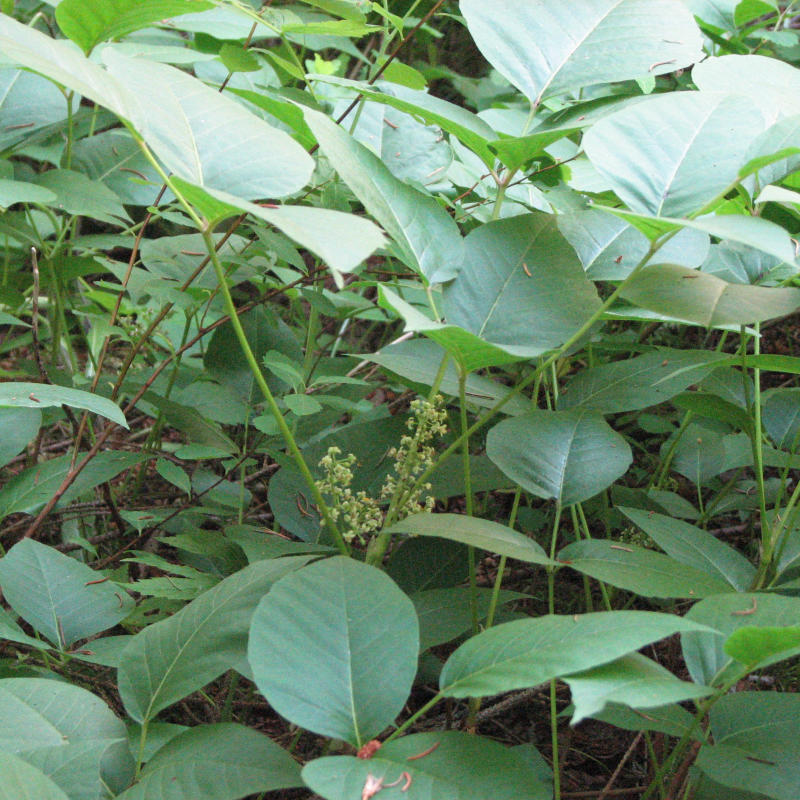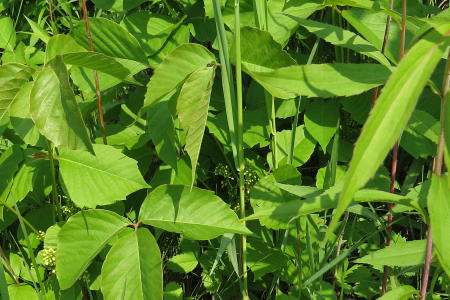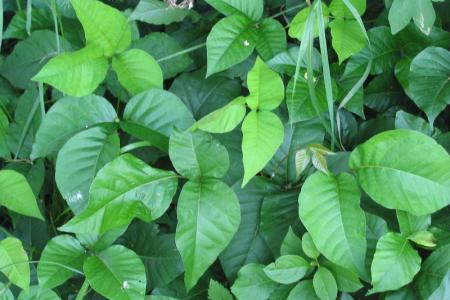 ©Roland Chiasson
©Roland Chiasson
 ©Roland Chiasson
©Roland Chiasson
 ©Wikipedia
©Wikipedia
Poison Ivy
Herbe à puce
Toxicodendron radicans
-
Description

- The usually shinny leaves of Poison Ivy have three pointed leaflets. They are reddish in spring, turn green during the summer, and become yellow-orange, or red in the fall. Yellow-green flowers appear during the summer. Green to yellow clustered, round, waxy berries appear by September.
-
Description
-
Interesting Fact

- Contact with any broken part of the plant may cause a blisters and intense itching. Nevertheless, Poison Ivy is commonly eaten by many animals and the seeds are consumed by birds.
-
Interesting Fact
